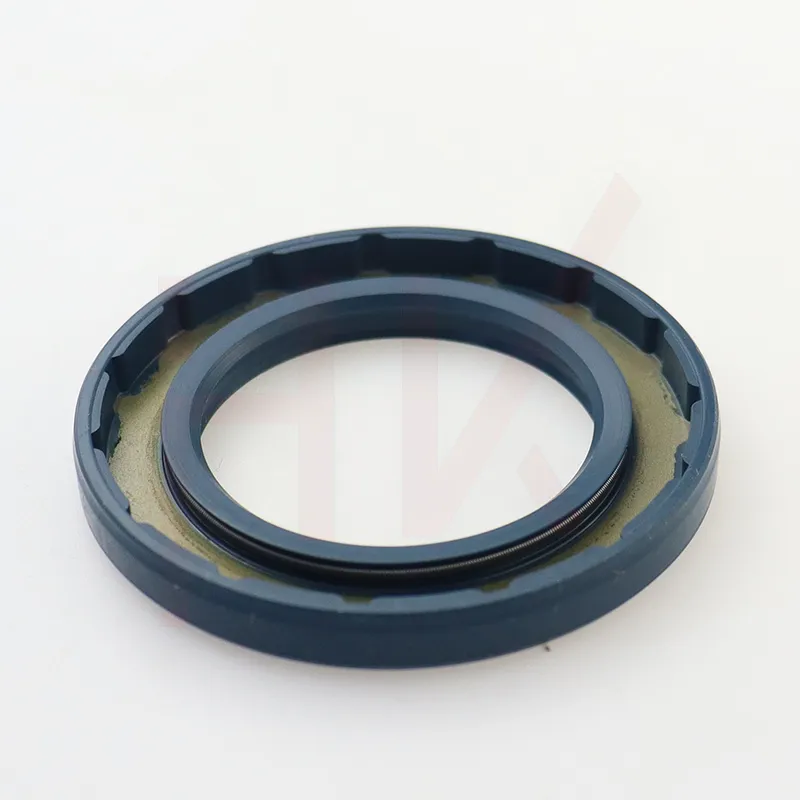Ara . 13, 2024 00:36 Back to list
Understanding Hydraulic Cylinder Seals and Their Importance in Fluid Control Systems
Understanding Hydraulic Cylinder Oil Seals
Hydraulic systems are essential components in many modern machinery and equipment, ranging from construction vehicles to manufacturing machines. One critical element within these hydraulic systems is the hydraulic cylinder, which relies heavily on oil seals to function effectively. This article explores the purpose, types, material options, and maintenance of hydraulic cylinder oil seals.
What is a Hydraulic Cylinder Oil Seal?
A hydraulic cylinder oil seal is a device that prevents hydraulic fluid from leaking out of the cylinder while simultaneously keeping contaminants from entering. It functions as a dynamic seal, meaning it moves along with the cylinder's piston as it extends and retracts. The effectiveness of these seals is crucial for the longevity and efficiency of hydraulic systems since leaks can lead to decreased performance and increased wear on components.
Purpose and Functionality
The primary purpose of a hydraulic cylinder oil seal is to ensure a complete seal under pressure. It prevents the loss of hydraulic fluid, which is vital for maintaining system pressure and performance. Additionally, the seal protects the hydraulic fluid from external contaminants such as dust, dirt, and moisture, which could compromise the fluid's integrity and the entire system's operation.
When the hydraulic cylinder operates, the piston moves back and forth within the cylinder barrel, and the oil seal ensures that the hydraulic fluid performs its duties without escape. If the seal fails, it can result in leakage, leading to insufficient pressure, equipment malfunction, and even safety hazards.
Types of Hydraulic Cylinder Oil Seals
There are several types of oil seals available, each designed to meet specific application requirements. The most common types include
1. Rubber Seals These are the most widely used due to their flexibility and resistance to various hydraulic fluids. Common rubber materials include nitrile, Viton, and polyurethane.
2. Metallic Seals These seals are typically used in high-pressure applications where standard rubber seals might fail. Metallic seals are durable but can be more expensive and less flexible than rubber alternatives.
3. Composite Seals Often a combination of rubber and metal, composite seals are designed to provide the advantages of both materials, offering flexibility and durability.
4. U-Cups and V-Rings These seals have specific shapes designed to enhance their sealing capabilities under pressure. They are commonly used in applications where performance is critical.
hydraulic cylinder oil seal

Material Considerations
The choice of material for hydraulic cylinder oil seals is vital, as it directly impacts the seal's performance and longevity. The most common materials include
- Nitrile Rubber (NBR) Offers good resistance to petroleum-based fluids and is one of the most commonly used materials. - Fluorocarbon (FKM or Viton) Known for its temperature resistance and chemical compatibility, FKM is ideal for more aggressive hydraulic fluids.
- Polyurethane This material provides excellent abrasion resistance and is often used in high-demand applications.
When selecting an oil seal, it's essential to consider the operating temperature, pressure, and the type of hydraulic fluid used to ensure optimal performance.
Maintenance and Care
Regular maintenance of hydraulic cylinder oil seals is necessary to prevent failures and extend the lifespan of hydraulic systems. Here are some best practices
1. Regular Inspections Perform routine checks on seals for wear and tear. Look for signs of fluid leakage and replace damaged seals immediately.
2. Fluid Quality Use high-quality hydraulic fluids and ensure they are free from contaminants that could degrade the seals.
3. Proper Installation Ensure seals are installed correctly to avoid misalignment and premature failure. Follow manufacturer guidelines for installation.
4. Temperature Monitoring Keep an eye on operating temperatures, as excessive heat can degrade seal materials over time.
Conclusion
Hydraulic cylinder oil seals are often overlooked but are crucial for the efficiency and safety of hydraulic systems. Understanding their purpose, types, and maintenance can help ensure optimal performance and longevity. Regular care and the right material choices can prevent costly repairs and enhance the safety and reliability of hydraulic machinery. Investing in quality seals and staying vigilant with maintenance practices can make a significant difference in the overall performance of hydraulic equipment.
-
TCN Oil Seal Metal Ring Reinforcement for Heavy Machinery
NewsJul.25,2025
-
Rotary Lip Seal Spring-Loaded Design for High-Speed Applications
NewsJul.25,2025
-
Hydraulic Cylinder Seals Polyurethane Material for High-Impact Jobs
NewsJul.25,2025
-
High Pressure Oil Seal Polyurethane Coating Wear Resistance
NewsJul.25,2025
-
Dust Proof Seal Double Lip Design for Construction Equipment
NewsJul.25,2025
-
Hub Seal Polyurethane Wear Resistance in Agricultural Vehicles
NewsJul.25,2025
-
The Trans-formative Journey of Wheel Hub Oil Seals
NewsJun.06,2025
Products categories
















